
Flooded area at Sai layout in Bengaluru following heavy overnight rains on May 19.
| Photo Credit: SUDHAKARA JAIN
Urban flooding has become a persistent and growing challenge in Indian cities, with Bengaluru experiencing increasingly frequent and disruptive flood events. In 2024, Bengaluru faced severe floods with over 2,000 homes submerged citywide. Bruhat Bengaluru Mahanagara Palike(BBMP) reported that 157 mm of rainfall was recorded in the Yelahanka area within six hours, resulting in the flooding of over 1,030 homes. Heavy rainfall led to widespread waterlogging and traffic congestion, severely affecting daily mobility and resulting in temporary road closures across the city. While climate change and erratic monsoons are contributing factors, the underlying issues stem from longstanding systemic gaps in planning, land use, and infrastructure management.
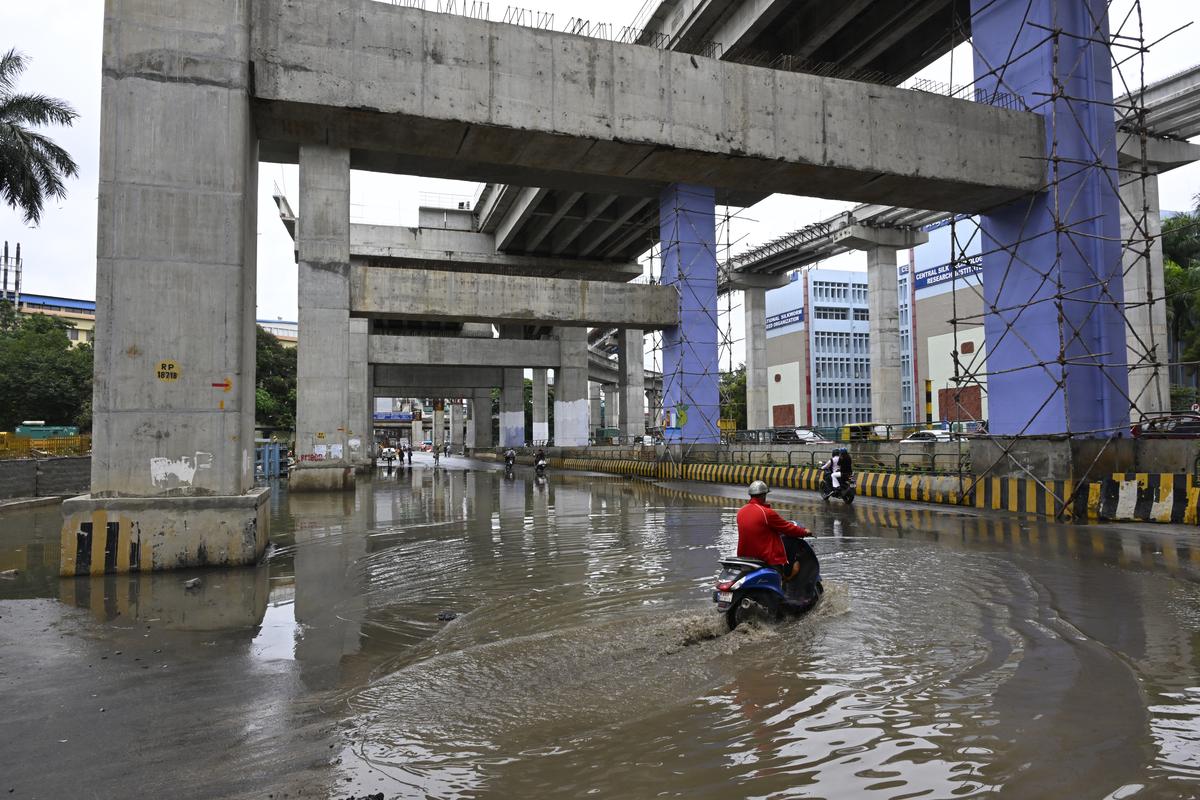
Traffic was diverted due to waterlogging near the Silk Board junction after heavy rain.
| Photo Credit:
k BHAGYA PRAKASH
Nature-based solutions
Historically, urban planning in Bengaluru and other cities across India has emphasised on the quick removal of stormwater from city limits. Since the drinking water sources to the cities are outside the metropolitan area, urban development strategies prioritised efficient stormwater drainage rather than local water retention or recharge. This led to extensive concretisation of stormwater drains and a planning paradigm that viewed rainwater as a problem to be expelled rather than a resource to be managed. Over time, unplanned urban expansion and weak enforcement mechanisms allowed for the encroachment of water bodies and stormwater channels by both private and government actors. Additionally, the disposal of liquid and solid waste has significantly reduced the natural water-holding capacity of the stormwater drains and water bodies, thereby increasing the vulnerability to flooding.
Flooded area at Sai layout following heavy overnight rain on May 19.
| Photo Credit:
SUDHAKARA JAIN
In this context, nature-based solutions (NbS) offer a promising and scientifically grounded approach to urban flood mitigation. Green infrastructure interventions such as rain gardens, wetlands, bioswales, green roofs, and permeable pavements can slow, store, and filter rainwater while also delivering ecological and social co-benefits. Globally, many cities have embraced such strategies under the framework of “sponge cities.” A notable example is Guangming District in Shenzhen where NbS interventions have resulted in a 72% annual runoff control rate and a 62% reduction in diffuse pollution. These outcomes were achieved through a combination of decentralised green infrastructure, improvements to water and wastewater systems, and active community engagement.
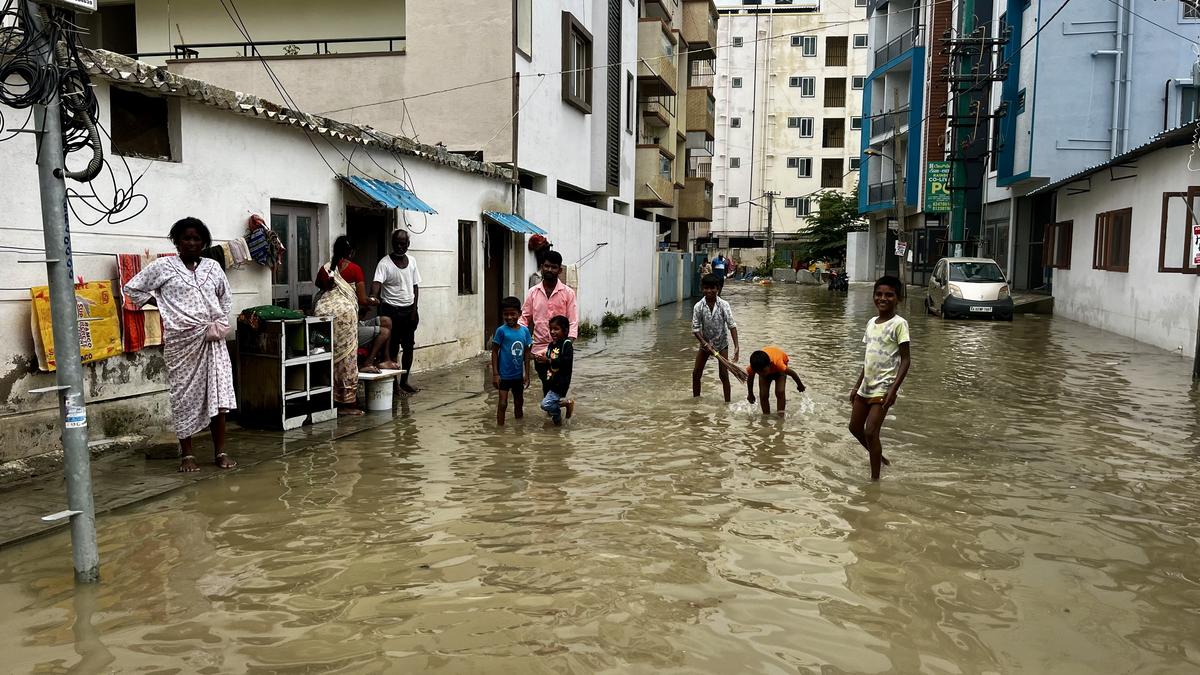
Flooded at the HRBR layout after heavy rainfall on May 19.
| Photo Credit:
SUDHAKARA JAIN
Well-positioned for redesign
Bengaluru is well-positioned to test and scale nature-based solutions. Known as the “Garden City,” it has more than 1,100 parks and over 250 playgrounds, distributed across eight municipal zones. Many apartment complexes and educational/private institutions also contain green spaces that could be repurposed or enhanced for stormwater retention. These existing assets offer a strong foundation for redesigning how the city absorbs and manages runoff.
A practical way forward would involve piloting NbS in selective wards, with a combination of experimental and control wards to allow for comparative assessment. These interventions could be supported by hydrological modelling to simulate different rainfall scenarios and determine the types, scales, and locations of NbS needed to reduce flood inundation and water depth. The modelling process can also guide the strategic integration of green and blue infrastructure within the existing urban area, optimising flood resilience without requiring large-scale redevelopment.
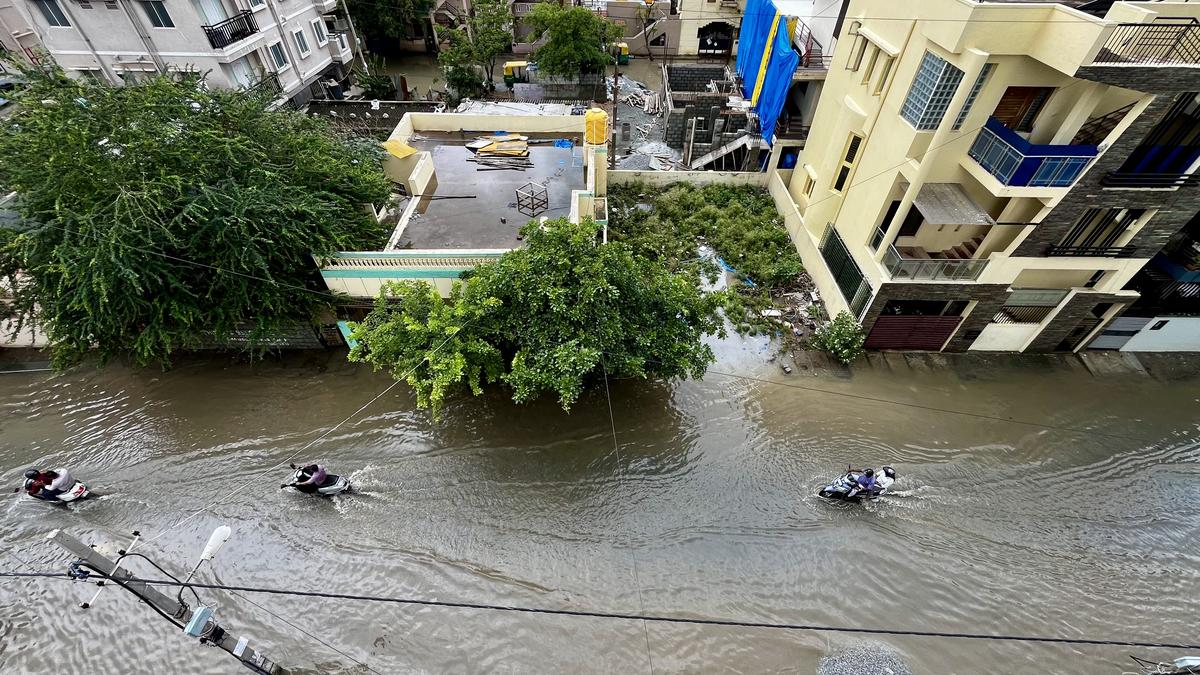
A flooded area at the HRBR layout.
| Photo Credit:
SUDHAKARA JAIN
Multiple benefits
The benefits of this approach go beyond reducing flood risk. Nature-based solutions can support biodiversity, enhance groundwater recharge, mitigate urban heat, and create opportunities for local employment and community stewardship. These co-benefits align closely with Sustainable Development Goal 11, which promotes inclusive, safe, resilient, and sustainable cities. However, despite their potential, such interventions often remain limited in scale. Key barriers include the absence of standardised design frameworks, limited documentation of long-term impacts, and a disconnect between pilot initiatives and citywide planning or investment decisions.
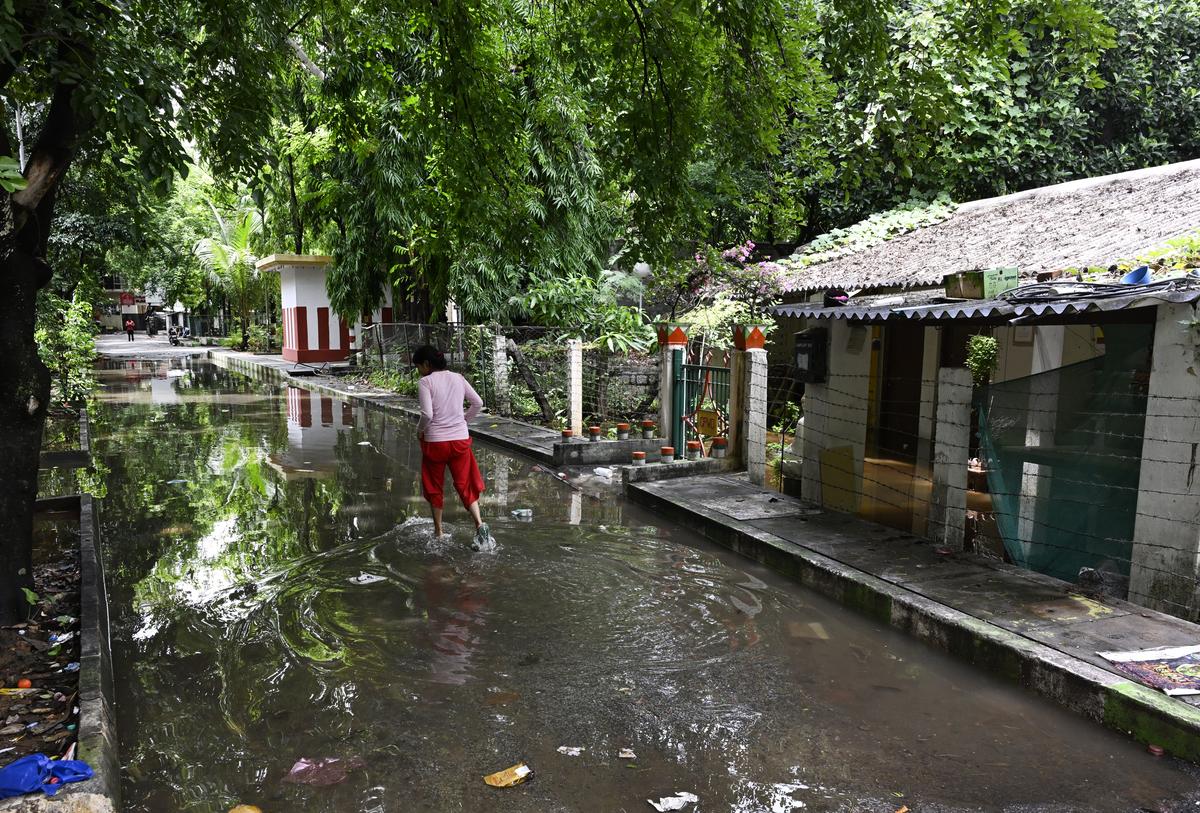
Waterlogging in the basement made residents stuck in their homes after the rain at Silk Board quarters in Bengaluru.
| Photo Credit:
K BHAGYA PRAKASH
Addressing these gaps requires a structured and evidence-based implementation strategy. Rigorous pilot studies, coupled with monitoring and evaluation, can generate the performance data needed to inform design standards and build confidence among stakeholders. Integrating these findings into municipal planning frameworks that are supported by cross-departmental coordination and targeted funding will be critical for moving beyond demonstration projects toward systemic change. Ultimately, the aim is to transition from an old model that seeks to quickly dispose of rainwater to one that values its retention and reuse. This shift will help the city manage stormwater more sustainably, while also contributing to water security and climate resilience. The knowledge and tools already exist. The next step is to apply them through a deliberate and collaborative process that brings together science, policy, and practice.
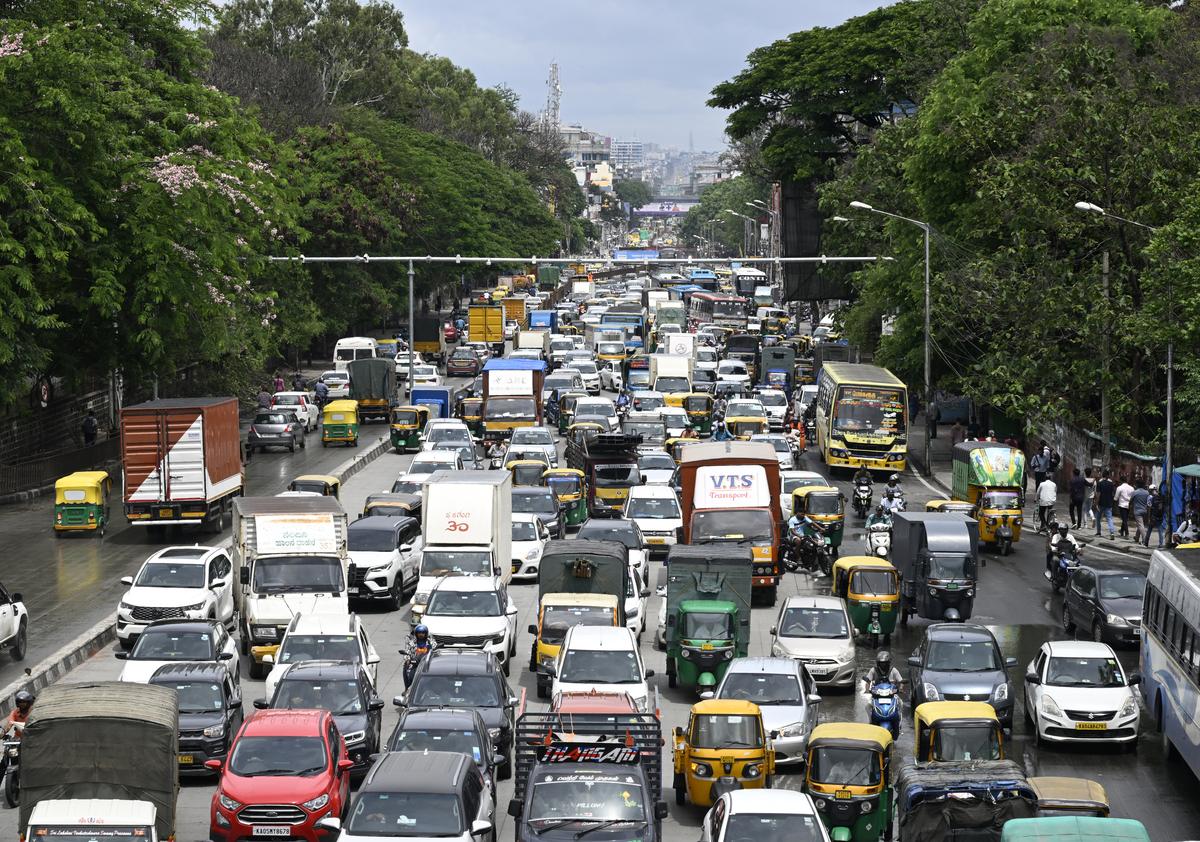
Traffic disrupted due to rain on Hosur Road on May 20.
| Photo Credit:
k BHAGYA PRAKASH
With careful planning and commitment Bengaluru city can lead by example in demonstrating how cities can adapt to their changing water realities. Rather than merely coping with the impacts of heavy rainfall, the city has the opportunity to reimagine its relationship with water by transforming a challenge into a platform for innovation, equity, and long-term sustainability.
Priyanka Jamwal is Programme lead (Water and Society programme) and Senior Fellow at ATREE.
Hymavathi P. is Senior research associate and project manager, Water and society programme, Centre for Environment and Development at ATREE
Published – May 26, 2025 09:00 am IST